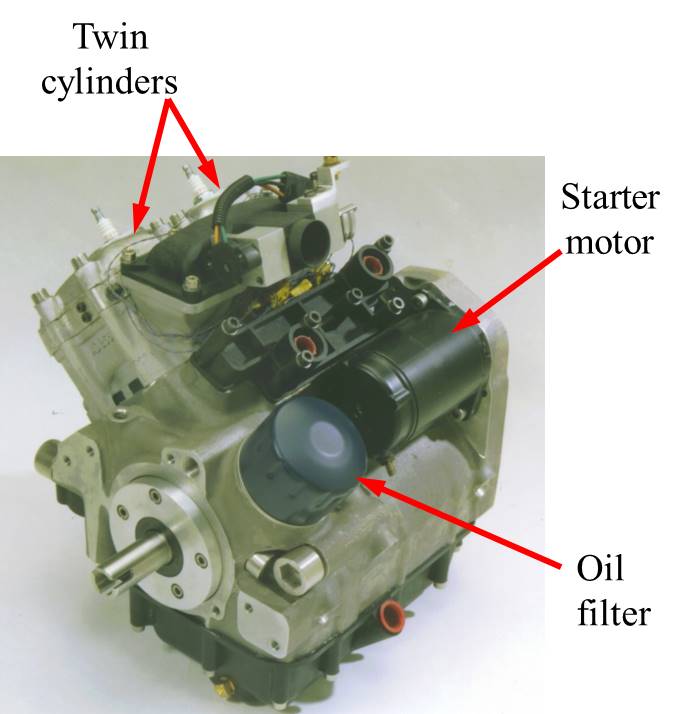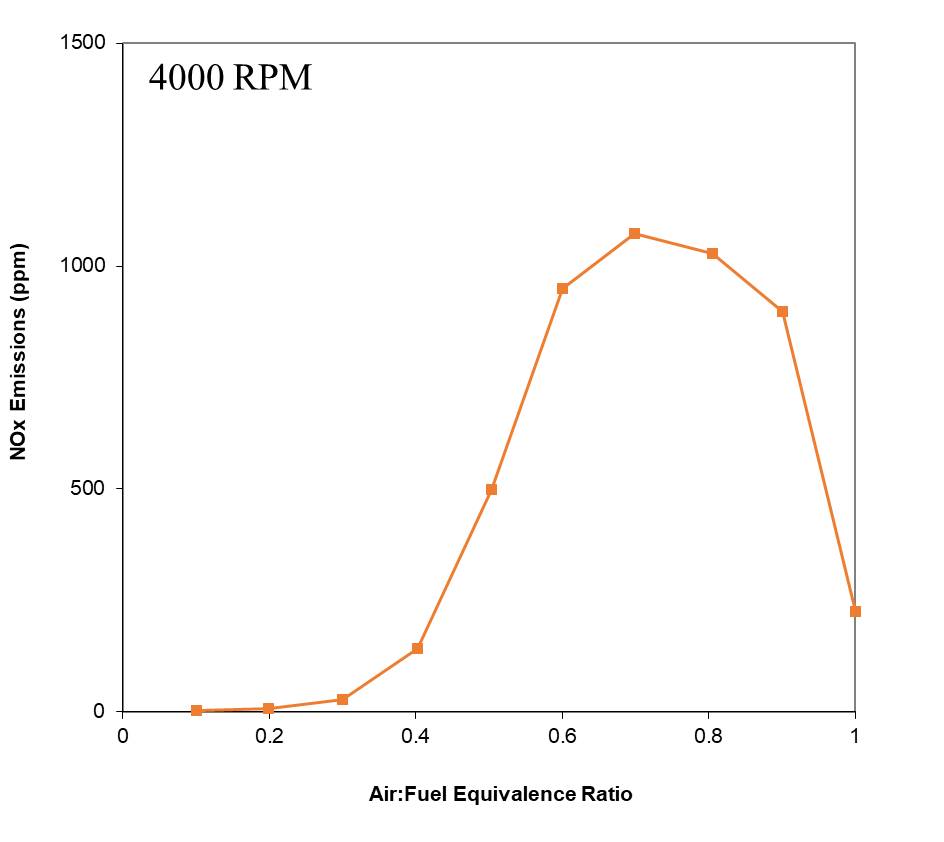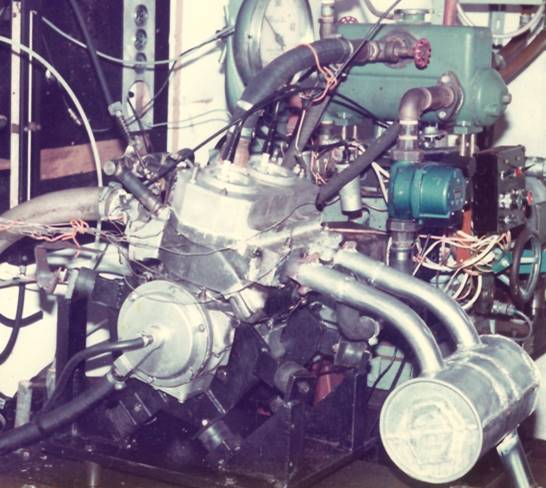
Due to
the complete separation of the scavenging processes from all other aspects of
the engine, such as the lubrication system and moving parts, the stepped piston
engine is very well suited to hydrogen fuelling. Many conventional engines have
experienced corrosion challenges when operating on hydrogen. This is countered by
the segregation offered by the stepped piston engine architecture.

UMA290 twin cylinder 290 cm3
Range-extender engine
Due to
the inherently low combustion temperatures and pressures evident with operation
on the two-stroke cycle emissions of oxides of nitrogen (NOx) are lower than emissions
from a comparable four-stroke cycle engine. The model data below compares the NOx
emissions for the UMA290 engine and a four-stroke twin cylinder engine of 374
cm3 (4S 374). Both engines are operating on indolene,
a reference form of gasoline. The power output and operational speeds of both engines is similar.
Operation
on hydrogen means that all emissions of unburnt hydrocarbons, CO and CO2 are
eliminated. NOx however can still form. The data in the lower graph (UMA290 H2) shows the
modelled NOx at full load when operating on hydrogen. Further significant reductions over
the four-stroke engine can be clearly seen.

Comparison of NOx emissions for UMA290 stepped piston engine and similar output four-stroke engine (4S 374) using indolene fuel, together with UMA290 operating on hydrogen
Hydrogen
will ignite at significantly wider flammability limits than can be achieved
with gasoline/indolene. The stepped piston engine has
repeatedly shown an ability to operate at very lean Air:Fuel ratios on gasoline. If it is possible to
operate on hydrogen at very lean conditions the emissions of NOx reduce even
further as shown below.

NOx emissions for UMA290 stepped
piston engine as a function of Air:Fuel
equivalence ratio
As can be
seen in the above data Air:Fuel
equivalence ratios below 0.3 result in single digit emission levels. All tests
were conducted at 4000 RPM.
More
details of the research conducted so far can be seen in the following journal
paper: -
A larger
capacity twin cylinder 497 cm3 engine is also under consideration
for hydrogen fuelling as shown below.

Twin cylinder SPX500 Engine
© BERNARD HOOPER ENGINEERING LTD